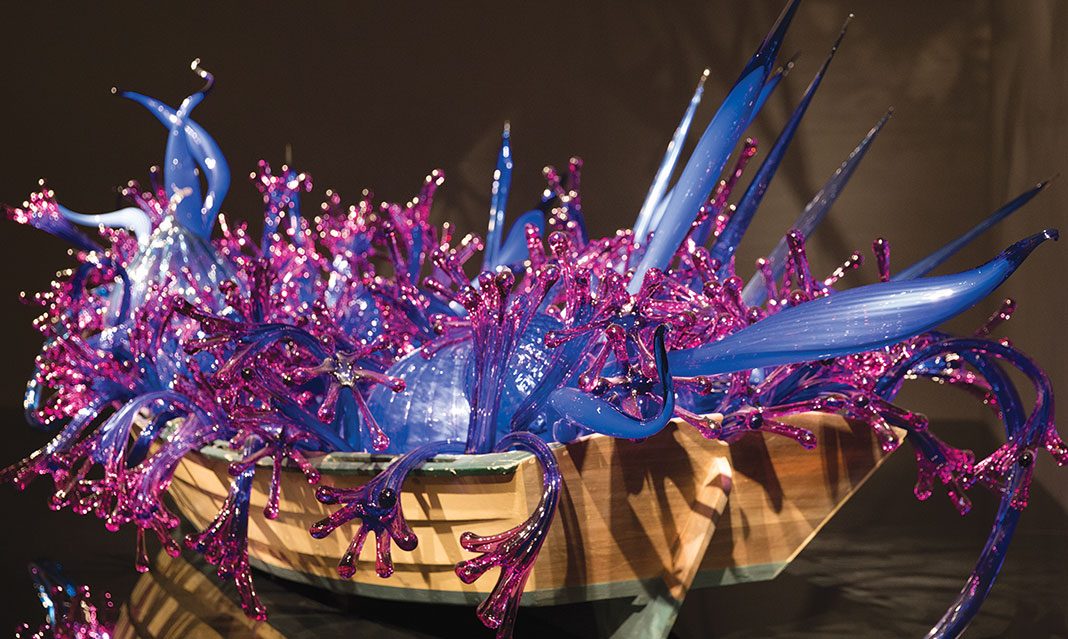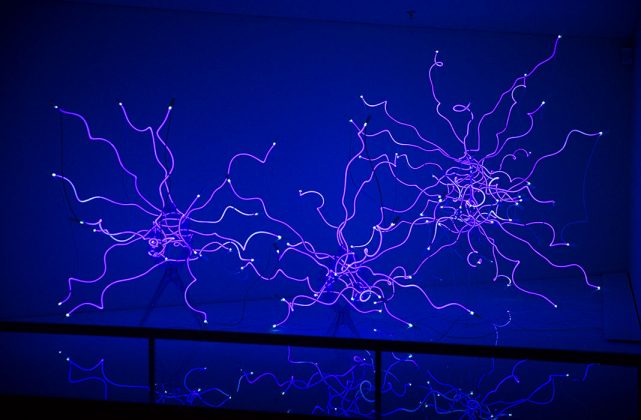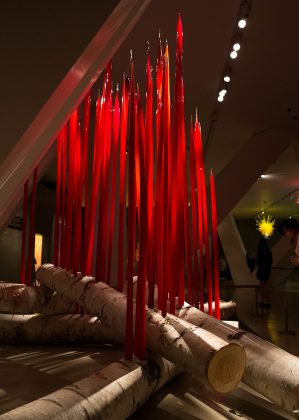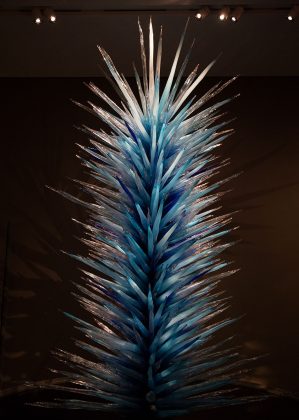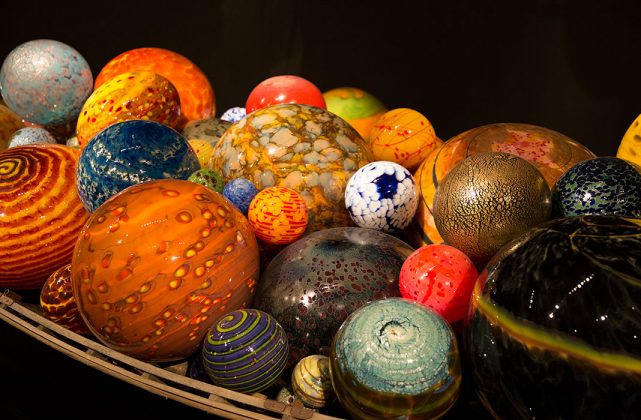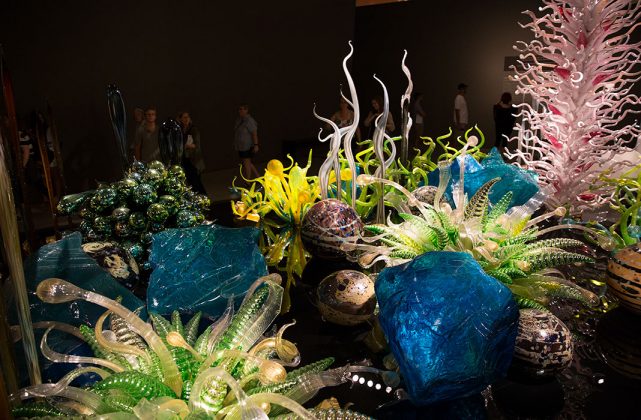I walk into a dimly-lit atmosphere, reminiscent of people falling in love. It’s fitting, given that I’m about to fall in love with Dale Chihuly and his works. But our “date,” of course, is merely my visit to the Chihuly exhibit at the Royal Ontario Museum. Unfortunately, I don’t actually have the honour of meeting the 74-year-old American sculptor who is the mastermind behind these works.
To begin the exhibit, the first room contains two boats titled “Float Boat” and “Ikebana Boat”, both of which draw my attention immediately with their bright colours. I enjoy the contrast between the two. “Ikebana Boat” holds organically-shaped glass in cool tones of indigo and fuchsia, while “Float Boat” contains spheres in warm colours.
The next room of the exhibit takes me to Italy. “Laguna Torcello” is a large garden of glass named after an island in Venice, Chihuly’s favourite city. The installation is an island in the middle of the room, giving me ample space to walk around and examine the varying shapes, sizes, and colours of the glass pieces. I personally don’t think the colours in this piece—whites, blues, greens, and browns—work well together, but what I do appreciate are the small, remarkably detailed sea creature sculptures.
To compare my ideas, I ask a visitor at the exhibit for her opinion. Daniela Nowotarska, a first-year art history student at OCAD University, says, “The moment you step into the room, it feels as if you are Alice in Wonderland. I find myself enchanted and captivated by the fine glass sculptures created by Chihuly. His artistry demonstrates imagination on a whole new dimension—something definitely worth seeing.”
As I continue my way through the exhibit, I come across an electrifying piece called “Sapphire Neon Tumbleweeds”. The light radiating from the glass tubing draws me in. As a self-proclaimed science nerd, I find this installation particularly interesting. The “tumbleweeds” bear resemblance to atoms, with their dense nuclei in the center and electrons orbiting around them. They remind me of what occurs at the atomic level for glowing neon gas: electrons are moving toward the nucleus and giving off light, in simple terms. With all of this in mind, “Sapphire Neon Tumbleweeds” is a great marriage of art and science.
The next installation, “Red Reeds on Logs”, is a seemingly simple one. It consists of long red reeds (surprise) that are placed on top of white birch logs. These reeds, some extending three metres long, remind me of Ontario’s forests, where I can picture myself standing among the autumnal trees with red, orange, and yellow leaves. I respect Chihuly for unexpectedly transporting me close to home, rather than to one of the many places he has visited in the world.
To round off my visit, I eagerly behold “Icicle Chandeliers and Towers”. I was most excited for these pieces, due to their dazzling colour and astounding size. I wasn’t disappointed. The chandeliers are fascinating; they don’t produce light like your typical chandelier. Rather, these chandeliers reflect light by a gentle means. Additionally, they really do look like icicles, which causes me to forget how all of these glass pieces are made. They haven’t just haphazardly formed by the work of nature in cold temperatures. Chihuly has crafted them using sand and fire to create beauty.
Chihuly is on display at the ROM until January 2, 2017.
